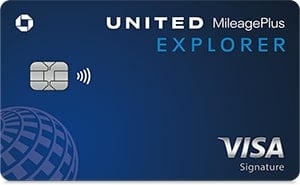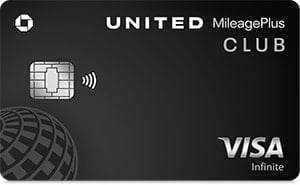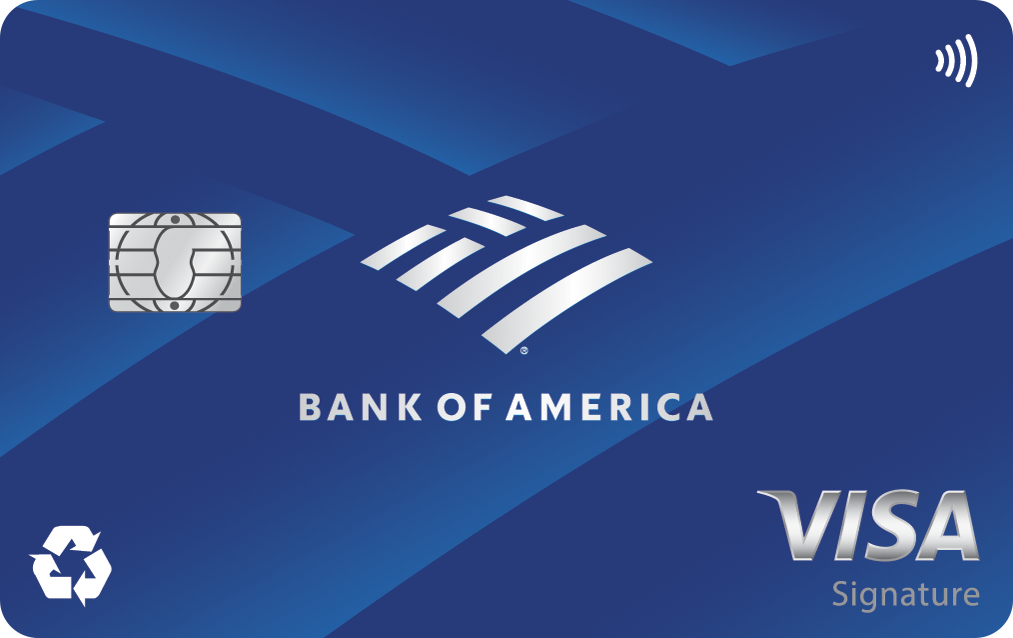United TravelBank Card: Closed to Applications, Replaced by United Gateway
The Bottom Line
3.3
The card was suited to those who didn't travel much, but who flew United when they did travel. But it did not offer flexibility or traditional airline-card perks.


Annual fee
$0
Rewards rate
1.5%-2%
Bonus offer
$150 in United TravelBank cash after you spend $1,000 on purchases in the first 3 months from account opening.
Intro APR
N/A
Ongoing APR
APR: 15.99%-22.99% Variable APR
Cash Advance APR: 24.99%, Variable
Balance transfer fee
Either $5 or 5% of the amount of each transfer, whichever is greater.
Foreign transaction fee
0%
- Earn 2% in TravelBank cash per $1 spent on tickets purchased from United.
- Earn 1.5% in TravelBank cash per $1 spent on all other purchases
- No foreign transaction fees
- Enjoy 25% back as a statement credit on purchases of food, beverages and Wi-Fi onboard United®-operated flights when you pay with your United TravelBank Card.
- TravelBank cash is easy to use. $1 in TravelBank cash = $1 when used toward the purchase of a United ticket.
- Your TravelBank cash accumulates in your United TravelBank account on United.com.
- $0 Annual fee
Pros and Cons
Pros
High rewards rate
No annual fee
No foreign transaction fee
Cons
None
Detailed Review
» This card is no longer available.
The United℠ TravelBank Card is no longer accepting applications. United Airlines and Chase have introduced a new credit card with no annual fee, the The New United Gateway℠ Card, which effectively takes the place of the TravelBank Card. Read our review of theThe New United Gateway℠ Card, or explore other United Airlines credit card options. Below is our review of the United℠ TravelBank Card from when the card was still on the market.
• • •
If you fly United Airlines, the United℠ TravelBank Card might be tempting because of its annual fee of $0. But it ultimately might not be worthwhile for most United flyers because of all that it lacks as an airline card.
The card has its own rewards currency that you can use to book free United flights. And its rewards rate is decent for both United spending and all other spending. It’s kind of like a cash-back card, where you can spend the cash only at United.
But you won't get free checked bags or early boarding like you do with many airline cards. And you won’t earn United MileagePlus miles, the airline’s frequent-flyer miles that have a chance at returning huge value.
If you want a card like this one, just get a true cash-back card. Then, you can spend your cash rewards on anything, not just United flights. Otherwise, ante up for a United card with an annual fee that comes with useful airline perks. There’s a good option in the The New United℠ Explorer Card.
United℠ TravelBank Card: Basics
Card type: Airline.
Annual fee: $0.
Rewards:
2% in TravelBank cash per $1 spent on tickets purchased from United.
1.5% in TravelBank cash per $1 spent on all other purchases.
Sign-up bonus: $150 in United TravelBank cash after you spend $1,000 on purchases in the first 3 months from account opening.
Foreign transaction fee: None.
Interest rate: The ongoing APR is 15.99%-22.99% Variable APR.
Noteworthy perks:
25% back as a statement credit on purchases of food, beverages and Wi-Fi onboard United-operated flights when you pay with your card.
No foreign transaction fees.
Trip cancellation/interruption insurance.
Rental car insurance.
Purchase protection.
Compare to Other Cards
Benefits and Perks
Simple rewards earning
With a typical airline card, you earn frequent flyer miles or points with every purchase. You then redeem those rewards for free flights or seat upgrades. But frequent flyer programs can be exceedingly complicated. The number of miles you’ll need for a particular flight depends on an array of factors. On top of that, the flight you want might not have award seats available. And your preferred travel dates might be “blacked out” — that is, reserved for paying customers.
The United℠ TravelBank Card eliminates the whole idea of miles. Instead, you earn “TravelBank cash,” which is redeemable for travel with United on a simple dollar-for-dollar basis.
The card earns 2% back on United purchases and 1.5% back on everything else. A $500 United flight, for example, would earn $10 in TravelBank cash. A $500 purchase elsewhere would earn $7.50.
Simple rewards redemption
When booking a flight with United, you can pay some or all of the fare with your accumulated TravelBank cash rewards. Consider a ticket that costs $400. If you had at least $400 in TravelBank cash, you could use it to pay the entire fare. If you had only $50 in rewards accumulated, you could apply it to the fare and reduce the cost to $350.
No annual fee
Some travel credit cards have annual fees measured in hundreds of dollars, while the typical airline card often charges a fee of close to $100 per year. This card has an annual fee of $0.
Sign-up bonus
For a simple credit card with an annual fee of $0, it’s a pleasant surprise to have a sign-up bonus: $150 in United TravelBank cash after you spend $1,000 on purchases in the first 3 months from account opening.
» MORE: NerdWallet's best airline cards
Perks
The United℠ TravelBank Card is light on flash compared with most travel cards, but it comes with minor perks:
In-flight discount: 25% back as a statement credit on purchases of food, beverages and Wi-Fi onboard United-operated flights when you pay with the card.
No foreign transaction fees: Travel cards generally don’t charge a fee — 3% is common — for making purchases abroad. This United card doesn’t, either. And it uses the Visa network, which is widely accepted abroad.
Travel-related insurances: Trip cancellation/interruption insurance and secondary rental car insurance are nice-to-haves on an airline card.
Purchase protection: Covers new purchases made with the card for 120 days against damage or theft, up to $500 per claim and $50,000 per account.
How it compares with other United cards
The United℠ TravelBank Card is one of three co-branded consumer United Airlines credit cards. Its siblings pack more perks.
Here’s how they compare on key features:
The New United Club℠ Card, annual fee of $695 | |
|
|
The New United℠ Explorer Card, annual fee of $0 intro for the first year, then $150 | |
Rewards:
|
|
The New United Gateway℠ Card, annual fee of $0 | |
Rewards:
|
|
Business owners, even those with side gigs, might consider The New United℠ Business Card.
Drawbacks and Considerations
No checked bags or early boarding
At $35 per bag each way when you don't prepay, fees for first checked bags add up in a hurry, especially when you’re traveling with others on your itinerary. That’s why typical airline cards are so valuable. But this card has no checked-bag-fee waivers, so you’ll have to pay. And you won’t get boosted toward the front of the boarding line, because the card lacks a priority boarding perk. That could hurt you when looking for overhead bin space.
The logical solution is the The New United℠ Explorer Card. It offers:
2 MileagePlus miles per dollar spent on purchases from United.
2 miles per dollar spent on restaurant purchases and hotel stays.
1 mile per dollar spent on all other purchases.
First checked bag free for you and a companion on your reservation, if you use the card to purchase your ticket.
Two United Club one-time use passes per year.
Global Entry/TSA Precheck statement credit every four years.
25% off in-flight purchases.
Sign-up bonus: Debut Offer: Earn 80,000 bonus miles after you spend $3,000 on purchases in the first 3 months your account is open.
It has an annual fee of $0 intro for the first year, then $150.
No miles
You won’t earn United MileagePlus miles with this card. That keeps things simple, but you also lose the potential to reap outsize value by scoring a great awards seat — like a business-class international fare worth thousands of dollars — for relatively little spending.
Fewer benefits
Some airline cards give you perks at the airport. They might reimburse you the application cost of Global Entry or TSA Precheck to get through security lines quicker, or get you free or discounted passes to an airport lounge.
This card offers none of those.
Limited reward redemptions
Redeeming rewards is relatively simple, but you’re still locked into United Airlines. That's limiting compared with general travel credit cards, which allow you to apply rewards to a wide range of travel-related expenses.
An option for those looking to avoid an annual fee is the Bank of America® Travel Rewards credit card.
It offers:
1.5 points per dollar spent.
3 points per dollar spent on eligible travel booked through the Bank of America® Travel Center.
A value of 1 cent per point when redeemed for travel credit and a little over half a cent per point for cash.
A sign-up bonus.
The Bank of America® Travel Rewards credit card isn't tied to an airline or hotel chain. Book travel any way you want, with no restrictions and no blackout dates, and then use points to wipe out the cost on your statement. Bank of America® also has one of the broadest definitions of "travel" of any major issuers. You can use points to get credit for airfare, hotel stays, cruises, car rentals, campgrounds, art galleries, amusement parks, carnivals, circuses, aquariums and zoos.
How To Decide If It's Right For You
The United℠ TravelBank Card offers a simpler way to earn free flights on United Airlines for casual flyers committed to that airline. But honestly, you’re better off with a cash-back credit card.
If you spread your flying among a number of carriers or want more flexibility, consider a general travel credit card. United loyalists are likely to get more value from the The New United℠ Explorer Card.
Information related to the United℠ TravelBank Card has been collected by NerdWallet and has not been reviewed or provided by the issuer of this card.
This card earns bonus rewards in multiple categories, including dining and travel. You can transfer points on a 1:1 basis to about a dozen hotel and airline programs, including United, or you can use them to book travel through Chase at 1.25 cents per point. However, you won't get any airline-specific perks. Annual fee: $95.
Looking For Something Else?
Methodology
NerdWallet reviews credit cards with an eye toward both the quantitative and qualitative features of a card. Quantitative features are those that boil down to dollars and cents, such as fees, interest rates, rewards (including earning rates and redemption values) and the cash value of benefits and perks. Qualitative factors are those that affect how easy or difficult it is for a typical cardholder to get good value from the card. They include such things as the ease of application, simplicity of the rewards structure, the likelihood of using certain features, and whether a card is well-suited to everyday use or is best reserved for specific purchases. Our star ratings serve as a general gauge of how each card compares with others in its class, but star ratings are intended to be just one consideration when a consumer is choosing a credit card. Learn how NerdWallet rates credit cards.
About the author

Gregory Karp
Senior Writer



